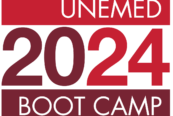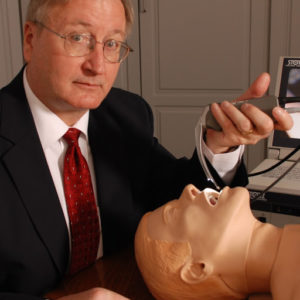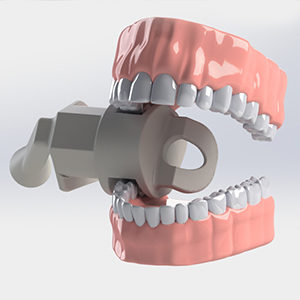by Bill Hadley, UNeMed | July 19, 2012
As many of you reading this blog already know, our primary goal here at UNeMed is to commercialize technology developed at UNMC. In order to do this, we take technologies generated from research performed on campus and partner with outside companies – or spin out start-ups – in order to develop the technology to the point where it is able to be used, sold, distributed or otherwise utilized in the public interest.
While we could spend weeks blogging about the nuances of the commercialization process – and intend to do so! – I would like to take a few moments to discuss the cornerstone of UNeMed’s commercialization efforts: patents. An understanding of what patent rights are – and what they are not – is essential to appreciating the commercialization process.
The basis for the U.S. patent system is found in Art. 1, § 8 of the Constitution, which states:
“Congress shall have power…to promote the progress of science and the useful arts by securing for limited times to authors and inventors the exclusive right to their respective writings and discoveries…”
At its core, this clause represents two competing interests. On one hand, we want innovators to invest their time, resources, and creativity into developing new and useful inventions that will contribute to society. On the other, we want society to understand, improve upon, and ultimately benefit from the innovator’s work.
To this end, the patent system strikes a balance. In return for their creative and financial investments, as well as their willingness to disclose the nature of their innovation to the general public, Congress has granted inventors a time-limited monopoly over the use of a patented invention for a period of 20 years from the date of application to the United States Patent and Trademark Office (USPTO). In return, all patents are published for public study and evaluation, and, after the 20-year monopoly has expired, become freely usable. In this way, society as a whole benefits from the creation and disclosure of the invention, while the inventor himself has the opportunity to capitalize on his rights to the invention under the government-sanctioned monopoly.
With the intent behind the patent system firmly in hand, let’s turn now to the scope of the monopoly granted by an allowed patent. Under 35 USC § 271(a), a patent provides its owner with the exclusive rights to do the following:
- Make the patented invention
- Use the patented invention
- Sell the patented invention
- Offer to sell the patented invention, and
- Import the patented invention
In other words, a patent does not authorize or entitle the patent holder to make, use, sell, offer to sell, or import their invention; it only gives the owner the power to prohibit others from doing so. I’m going to repeat that one more time, so it’s clear:
A patent does not give its owner the right to do anything except prohibit others from making, using, selling, offering to sell, or importing the patented invention.
Thus, receipt of a patent is in no way a guarantee or indication as to the value or profit-generating abilities of the invention. Instead, patents allow inventions which have independent value to the market to capitalize on that value without fear of a competitor copying the invention and undercutting the patent holder’s market share.
This description is only the tip of the iceberg when it comes to understanding how the patent system functions. There are myriad other nuances, rules, procedures, and technicalities that exist in our domestic patent system and these complications only increase when one considers filing for foreign patents.
While I will be discussing many of these topics in the coming weeks, keep in mind that these entries are not intended to make experts out of the reader. Instead, they will (hopefully) provide you with a passing familiarity with the relevant terms, procedures, and rules, in the hopes of providing context for understanding the overall university technology commercialization process.
If that encourages a few of you to take advantage of the services UNeMed provides, so much the better.
Please leave any questions or suggestions you may have in the comment section below.
You can also shoot me an email at bill.hadley@unmc.edu.
I will be happy to address any thoughts you may have.
Nothing in this post should be construed as legal advice. It has been developed by the UNeMed staff as an educational resource for faculty, staff, students, and other personnel associated with the University of Nebraska Medical Center. While all information contained herein has been thoroughly fact-checked, this site is provided on an “as is” and “as available” basis. Neither UNeMed nor the University of Nebraska Medical Center make any representations or warranties of any kind, express or implied, as to the site’s operation or the information, content or materials included on this site. To the full extent permissible by applicable law, UNeMed and the University of Nebraska Medical Center hereby disclaim all warranties, express or implied, including but not limited to implied warranties of merchantability and fitness for any particular purpose. Neither UNeMed nor the University of Nebraska Medical Center will be liable for any damages of any kind arising from the use of or inability to use this site. You expressly agree that you use this site solely at your own risk.












[…] here is disclosure: a patent rewards the inventor for developing his patented gizmo by prohibiting others from making, using, selling, offering to sell, or importing the patented inventio…. In addition, patents also reward inventors for disclosing the invention. This is important, […]
[…] mark, not the product the mark represents. Thus, trademarks cannot be used to protect an invention (Patents) or literary works, software, or music (Copyrights). Nevertheless, trademarks are an integral part […]
[…] discussed before, patents give the owner the power to prohibit others from making, using, selling, offering to sell, o…. An obvious method to gain profits from a piece of intellectual property is litigation, through […]
[…] developments, or other forms of expressing an idea. Intellectual property may be protected using patents, copyrights, trademarks, and trade secrets. The rights to an article of intellectual property may […]